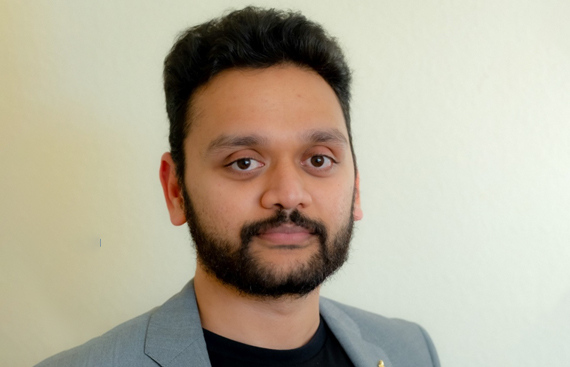Enhancing AI Applications With Deep Learning - Talking with Thought Leader Dwith Chenna

In the ever-evolving digital landscape, Artificial Intelligence has become a part and parcel of our lives. With new advancements every day, an incredible driving force behind this marvel of AI has been noticed in recent years in the form of Deep Learning. Today, AI is capable of transforming lives. With the help of Machine Learning and Deep Learning, it can be applied across various industries like healthcare, finance, entertainment, etc.
We spoke to Dwith Chenna about his work in the integration of Artificial Intelligence with Deep Learning. With more than six years of experience in computer vision, deep learning, and DSP optimization, Dwith is passionate about creating innovative and efficient solutions for EdgeAI to solve problems in human-computer interaction and image/video processing. He has actively worked on deep-learning applications in mobile business, medical devices, and the AR/VR industry.
Talking about smartphones, Dwith elucidated his work on the early adoption of NNAPI aimed at bringing deep-learning-based AI capabilities to Android mobile phones. He led the project for the software development of computer vision libraries and applications on the Tensilica Vision line of Digital Signal Processor (DSP). These implementations were verified on many deep learning applications like classification, detection, segmentation, and super-resolution to be used on mobile devices.
Being one of the early adopters of these standards, Dwith developed the quantized implementation of deep learning layers on vision DSPs, profiled the libraries on the MLPerf benchmark, and documented user guides and release notes for customers. He was also involved in exploring multi-core architectures for efficient implementation of computer vision applications on embedded processor systems to enable real-time application.
This remarkable implementation by Dwith for NNAPI was also used by the DSP on MediaTek flagship SoC, being a market leader with more than 30% market share in the mobile devices market selling around 4.5 billion devices in 2021. Further, this implementation was shipped with millions of mobile devices supporting Android OS, enabling AI on mobile devices.
Further, Dwith also elaborated on his work with the FDA Center for Devices and Radiology Health (CRDH), where he worked with computer vision algorithms that are dominated by deep learning methods. Here, he started as an ORISE researcher for the development of image and video processing algorithms and experimental methods for evaluating overall device performance. Specifically, he implemented a non-rigid image registration algorithm for thermal and visible images which enabled the development and evaluation of thermal non-contact fever screen systems at scale.
With such exposure, Dwith said, “I was exposed to a new world of medical devices and how computer vision/deep learning was revolutionizing this field.” These algorithms have demonstrated their potential to enhance accuracy, efficiency, and diagnostic capabilities in many medical applications, leading to improved public health and patient care.
In the context of AR/VR technology, which is still in its early stages, there are a lot of challenges. For the enhancement of its application, Edge AI has emerged as a game-changer with opportunities to deliver real-time, immersive experiences. Not only is it essential for privacy and security, but also for real-time performance which is critical for an elevated user experience.
Dwith Chenna researched and developed computer vision/deep learning algorithms on DSP to achieve quantized accuracy and speed. Achieving this state-of-the-art performance is essential for the development of advanced technology like the AR glasses.
Further, he has also worked on the implementation and evaluation of these algorithms for AR’s critical perception tasks for performance and accuracy along with highly visible metrics like latency, memory, bandwidth, and power.
AI applications using deep learning have been instrumental in solving problems that have eluded humans in many fields. “Many initiatives on AI for good are particularly inspiring to me these days, as they try to solve the challenging problems of society through deep learning-based AI. In this digital age, where we can learn and dissipate data at a large scale, Deep Learning leverages that data to solve problems that were once thought to be difficult.”, concluded Dwith, while also expressing his desire to apply his expertise to solving problems in various fields.
